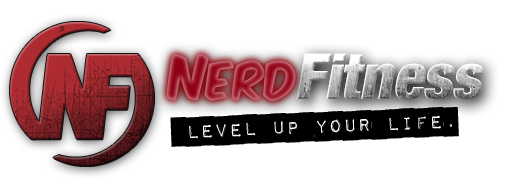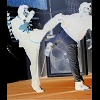Search the Community
Showing results for tags 'i-ching'.
-
De-mystifying the 8 Gates of Tai Chi (or, "You tai chi guys really like Symbolism!") One of the principal concepts of Tai Chi that I regularly use in my own practice and is historically a central idea to the art is that of the "8 gates/8 energies/8 bamen." When I first got into the art, I found many references in the classical books to "mobilize your peng" and "relax into Lu" and this had literally no meaning to me at all. Even context clues are pretty much useless when 90% of the references are in pinyin or some other kind of Romanized Mandarin. So, to hopefully help someone else get past this, let's see if I can't make a "Supreme Ultimate Fist Symbolism for Dummies" post that makes this a lot more approachable for the home scholar or new student. Important Things you HAVE to know first Tai Chi and the concepts of Yin-Yang are pretty much indivisible. The main thing to understand here is that in the way that I'm going to be using references to them is about their principal energies. Traditionally, and in the figure that I'm going to use as a reference here, yin and yang are represented as a black 1/2 and white 1/2 of a circle drawing. Yin is the black side with the white dot in it, and Yang is the white side with the black dot in it. Yin (literally the "shady side") is characterized as slow, yielding, soft, cold, nighttime, and feminine energy. Yang (the "sunny side") is fast, hard, direct, hot, daytime, and masculine. These two interplay in almost all Taoist concepts and neither can exist without the other. In most Chinese Medicine, the central idea is to correct imbalances of the yin and yang energies within the body. Tai Chi strives for the same goal, to restore balance to opposing forces. Also, to make sense of our diagram, we need to understand how these two energies are represented in the I-ching ("Book of Changes"), which is an ancient Chinese classic on divination originally written somewhere around 1000 BC, supposedly. This book itself isn't too important for our discussion, but the WAY to read the trigrams (or "gates") is. The trigrams are a set of 3 lines that explain how Yin and Yang energies work with each other. The lines themselves are either solid (Yang) or dashed (Yin.) I'm going to use that notation below as well, because it's tradition and looks cooler as a tattoo. -------- Yang line --- --- Yin line. Simple enough, right? Big Diagrams that Look Cool and are Good Tools for Memorizing. Dude, that is awesome looking. If I was trying to market my martial art style, this looks like the kind of symbol that I'd have made into a big poster and we'd hang it on one wall to look like there was some kind of awesome kung fu secret to it. Also, if you were trying to teach someone who was illiterate, like a farmer from 100 AD because you were a Taoist hermit, then those lines would probably really help....but wait, there are all those confusing words I'd talked about above, "Peng, Pan, Kao, An, Lieh...." these don't mean anything to me because my knowledge of the Chinese language is only slightly above "Kung Pao Shrimp." Let's do it like this: Ohh, that's a lot simpler looking now. We've got our big circle with Yin and Yang in it, and now those words actually have not only easier to understand replacements, but actually look like some of the movements in the Tai Chi form. Wait, though, trigrams and I-ching and gates and such, how does that work? Well, that's actually pretty easy to understand. Those 3 solid lines make up the symbol for the "Peng" or "Ward Off" energy. The energies are related highly to how you should think about the corresponding postures (or "dem moves") in Tai Chi. When you do "Ward off to the Right", then thinking a little about the trigram can help to remember how it should "feel," and what energies were normally attributed to it from a Yin or Yang perspective. Breaking them Down, piece by piece: This section is going to be a bit mystical still, as some of the attributes to each energy are so closely tied to Chinese medicine and mysticism that without the cultural background, it almost sounds magical. Just roll with it, as it's something that just makes sense once you've been practicing for a length of time. One of the greatest things about Tai Chi is that it's something that you MUST learn by doing, and no amount of reading theory will ever take the place of that. -------- -------- -------- Peng/Ward off: This is a gate symbolized by 3 Yang lines. It is normally attributed to an energy that occupies space and bounces off things that it come into contact with. It is expansive, penetrating, and forceful. It's spirit is confidence and assertive. To make this as Western as I can, this energy is normally related to trying to break in a door. It's a high amount of commitment to outward force that my have you thinking "Gotcha, now, sucker!" in a round of push-hands. --- --- --- --- --- --- Lu/Luo/Roll-back: This is a gate that is the polar opposite of Peng. It's symbolized by 3 Yin lines, and is attributed to contracting, yielding. You're creating a vacuum or absence to draw the opponent into the space you wish for them to occupy with their energy. It's a minimal effort parry, or evacuation from an opponent's attack. It dissipates incoming energy, letting them burn out their own momentum without harming you. Spiritually, it's the power of peace, silence, or space. If you remember in the "Peanuts" comics where Lucy would pull the football away from Charlie Brown at the last second before he could kick it, that's "Lu" energy in action. He flipped himself over, she just wasn't there anymore. --- --- -------- --- --- Ji/Press: This is a gate that is used to create space with its energy. It is symbolized by a Yang ling sandwiched between 2 Yin lines. The movement is an evasion or escape where you turn an opponent's joint lock into an advantageous position for yourself before they finish. It is the subtle use of expansive energy that can spiritually be thought of as turning a bad situation in our favor by simply changing our position or perspective. -------- --- --- -------- An/Push: This gate is the reflection of Ji, and is drawn as a Yin line between two Yang lines. It's used to tease an opponent by using Peng energy to create a bit of space, allowing them to feel like you've withdrawn, and then exploding using the bit of space you created by yielding. Spiritually, it teaches us to take a moment while under tension (either in push hands or in life) to relax and neutralize the negative, gain better footing, and then apply a final assault to our opponents. -------- -------- --- --- Tsai/Cai/Pull-Down: This gate is fun. It's 2 Yangs atop a Yin, which really is a cool way to symbolize "snatching the rug out from under someone". It's energy is used to pluck the opponent's force downwards, utilizing speed and surprise. It's aggressive and avoids any hesitation in the action itself, but is not done with full-body commitment. Spiritually, it teaches us that a swift application of imperative force can be useful, but needs to be backed with a solid footing or backup plan. I think of this as the force used to snatch a tablecloth off of table without upsetting the dishes. --- --- --- --- -------- Lie/Split: This gate is also fun, as it's a drawing where it looks like our expanding Yang energy on the bottom would rise up through the Yin above it. That's the idea of Lie energy, as it expands upward when the time is right. This is used for whirring an opponent off you, throwing or tripping them. It's the essence of Judo. Lie is lifting with fulcrums or leverage advantages to upset even a firmly established target. It teaches us spiritually how to apply force properly to upset a good foundation, or that what comes around goes around. --- --- -------- -------- Chou/Zhou/Elbow: This is the most destructive of all the gates. It is the energy of allowing your opponent to build momentum only to be met with extreme force. It gives strength when the opponent is trying to suffocate your power by closing in, simply by yielding the first joints to meet with a solid object. Think of it as bending the arm as an opponent rushes us, and then meeting their forward momentum with an elbow strike. The Yin line is the reminder to allow our actual force to be concealed as the opponent will withdraw if they know it's coming. Spiritually, it teaches us to give a little up front if it allows us a stronger position in the future. -------- --- --- --- --- Kao, Shoulder: This gate is used in the tightest of spaces. It's where we use expansive energy even if we've allowed a breakdown in our own defense. The double Yin lines represent that an opponent can still be met with Peng energy after they are on the inside. Spiritually, it teaches us that no matter how close a threat has come, no matter how hopeless the situation looks, that we are never hopeless to fight a negative situation. Summary: Ok, I hope that helps to make sense out of some really confusing concepts that I personally ran into issues with when I started my journey into Tai Chi. It's not nearly as complicated as it first appears, and it's actually not some kind of magic. It's practical sense based on momentum, physics, footwork, and mechanics. Now, there's obviously some great depth to Chi training, but that shouldn't make the deeper principals of good Tai Chi Chuan practice so confusing to a new student. Let me know if this helped you, or if you have any questions. While I don't know everything, or even very much, I'll do what I can to help anyone who is truly interested in this magnificent art. *I've debated with myself a bit on starting some more in-depth articles and discussions here regarding Tai Chi. While I really like sharing what little bit I know with people and learning from others, I despise internet "arm-chair warrior" debates and arguments. Still, there's a lot of really great and wonderful things about the art of Tai Chi Chuan that I'd love to open a discourse on. As long as people are willing to be fluid and realize that there are no absolutes in any of these discussions, then I think that we might all be able to collectively learn from one another...so, let's try it. Probably the most important aspect of this is who I am, and I'm nobody special. I'm just a simple Yang stylist with a pretty demanding personal practice, but I'm no Zhang Sanfeng (and maybe he wasn't either)...so everything presented here is simply as "I understand it" and that it subject to change in the future as well.


